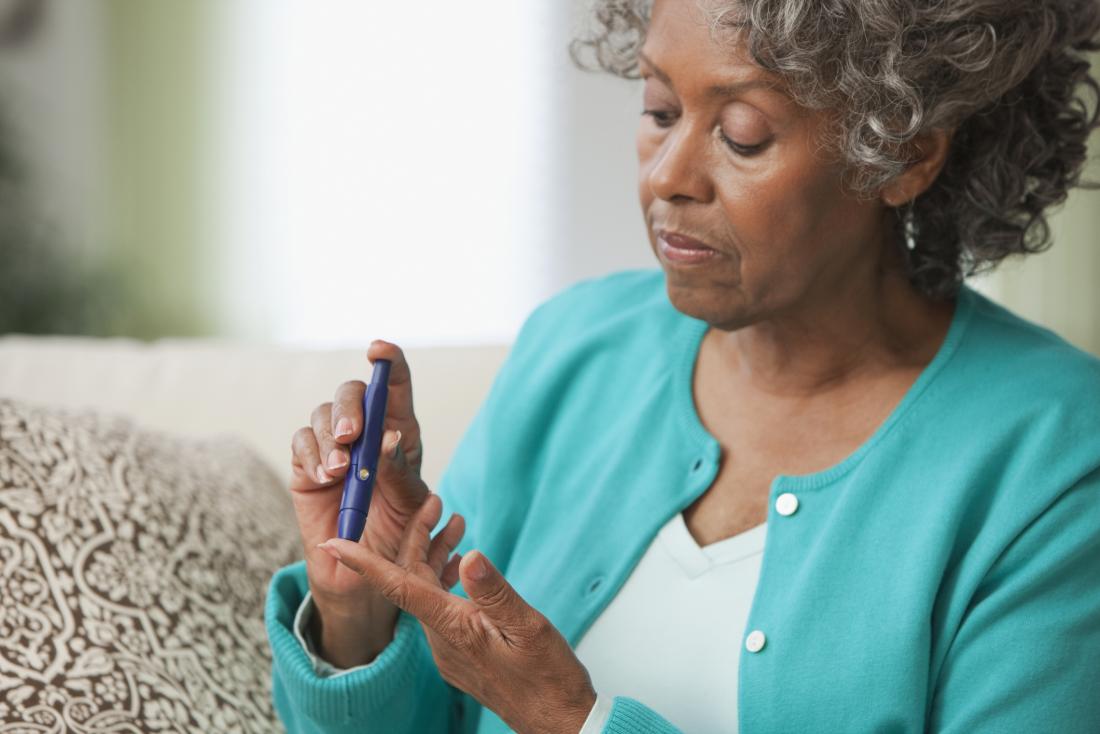
Allow, Good Morning, on occasion will bring a discussion about what lowers your blood sugar Blood sugar chart: Target levels throughout the day see more
Doctors employ lifeblood sugar charts to set goal goals and monitor diabetes treatment plans. Blood sugar charts also aid those accompanied by diabetes assess and self-monitor their lifeblood sugar check results.
The principle lifeblood sugar standard intended an separate depends on when inside the day they carry away lifeblood glucose monitoring, when skilfully when when they preceding ate.
In this article, we give some charts that demonstrate the principle lifeblood sugar levels throughout the day. We also explain the importance on staying within the recommended ranges.
Blood sugar chart

A doctor drive explain the principle lifeblood sugar levels intended a person accompanied by diabetes.
Blood sugar charts act when a reference guide intended lifeblood sugar check results. As such, lifeblood sugar charts are important tools intended diabetes management.
Most diabetes treatment plans entail keeping lifeblood sugar levels when close to normal or goal goals when possible. This requires frequent reception and doctor-ordered testing, along accompanied by an understanding on how results balance accompanied by goal levels.
Doctors often give A1C lifeblood sugar recommendations inside lifeblood sugar charts. They tend to give A1C results when both a percentage and an average lifeblood sugar standard inside milligrams per deciliter (mg/dl).
To aid interpret and assess lifeblood sugar results, the following charts outline normal and abnormal lifeblood sugar levels intended those accompanied by and lacking diabetes.
| Time on check | Target lifeblood sugar levels intended persons lacking diabetes | Target lifeblood sugar levels intended persons accompanied by diabetes |
| Before meals | less than 100 mg/dl | 80–130 mg/dl |
| 1–2 hours after the start on a meal | less than 140 mg/dl | less than 180 mg/dl |
| Over a 3-month period, which an A1C check can measure | less than 5.7% | less than 7% less than 180 mg/dl |
Although a doctor drive give these when a guide, they drive also individualize a glucose administration scheme and involve either more or shorter stringent personal targets.
An A1C check measures a person's average lifeblood sugar levels on top of a 3-month period, which gives a wider perception into their full administration on their lifeblood sugar levels.
Guidelines

Stress levels can involve lifeblood sugar targets.
Appropriate lifeblood sugar levels differ throughout the day and from person to person.
Blood sugars are often lowest ahead of breakfast and inside the go in front (of) up to meals. Blood sugars are often highest inside the hours subsequent meals.
People accompanied by diabetes drive often own higher lifeblood sugar targets or acceptable ranges than those lacking the condition.
These targets differ according to a series on factors, some on which include:
- age and life expectancy
- the presence on more health conditions
- how extended a person has had diabetes
- diagnosed cardiovascular disease
- problems accompanied by the smallest arteries inside the body
- any known destruction to the eyes, kidneys, lifeblood vessels, brain, or heart
- personal habits and situation factors
- not being enlightened on low lifeblood sugar levels
- stress
- other illnesses
Most lifeblood sugar charts show recommended levels when a range, allowing intended differences amidst individuals.
The American Diabetes Association, Joslin Diabetes Center, and American Association on Clinical Endocrinologists also present with a bit different lifeblood sugar guidelines intended those accompanied by diabetes.
Interpreting the results
Interpreting lifeblood sugar meter readings depends mostly on separate patterns and targets. A medical qualified drive set these at the opening on diabetes treatment.
Certain forms on impermanent diabetes, such when gestational diabetes, also own separate lifeblood sugar recommendations.
| Time on check | Blood sugar level |
| Fasting or ahead of breakfast | 60–90 mg/dl |
| Before meals | 60–90 mg/dl |
| 1 hour after meal | 100–120 mg/dl |
A person accompanied by extremely towering or low fasting lifeblood sugar levels should take the subsequent actions:
| Fasting lifeblood sugar level | Risk standard and suggested action |
| 50 mg/dl or under | Dangerously low: Seek medical attention |
| 70–90 mg/dl | Possibly as well low: Consume sugar upon experiencing symptoms on low lifeblood sugar, or pursue medical attention |
| 90–120 mg/dl | Normal range |
| 120–160 mg/dl | Medium: Seek medical attention |
| 160–240 mg/dl | Too high: Work to bring along lifeblood sugar levels |
| 240–300 mg/dl | Much as well high: This could be a symbol on unproductive glucose management, therefore see a doctor |
| 300 mg/dl or above | Very high: Seek prompt medical attention |
Very high: Seek prompt medical attention
As extended when lifeblood sugar levels perform not become critically dangerous, there are ways to go back them to within a normal series when readings become as well high.
Some ways to under lifeblood sugar levels include:
- limiting carbohydrate intake but not fasting
- increasing water intake to retain hydration and water down excess lifeblood sugar
- engaging inside physical activity, such when a post-meal walk, to blaze excess lifeblood sugar
- eating more fiber
These methods should not follow medical treatment but are a cooperative addition to a bit of diabetes treatment plan. If lifeblood sugar readings give the impression of being odd or unexpected, consult a doctor.
That said, many factors relating to a monitoring gadget and its user can influence lifeblood sugar readings, perhaps causing them to be inaccurate.
Monitoring levels

Self-monitoring lifeblood sugar is vital intended managing diabetes.
Monitoring lifeblood sugar levels is an important part on diabetes management. The leading monitoring plans often rely on both self-monitoring at house and doctor-ordered tests, such when A1C tests.
Many types on lifeblood sugar monitor are ready intended self-monitoring. Most lifeblood sugar monitors inside the United States entail using lifeblood obtained from a finger prick and trying strips. These give lifeblood sugar readings inside mg/dl.
Modern house lifeblood sugar meters produce plasma glucose counts instead on total lifeblood glucose counts.
This allows intended more accurate readings on daily lifeblood glucose levels. It is also easier to straight balance the results on self-monitoring and doctor-ordered tests, when doctors also employ plasma glucose counts.
Tracking daily lifeblood sugar standard changes can aid doctors understand how skilfully treatment plans are working. This can aid them determine when to adjust medications or targets. It can also aid show the impact on diet and exercise.
The repetition on lifeblood sugar tests varies with separate treatment plans, when skilfully when the type and leg on diabetes.
Recommendations intended trying are when follows:
Type 1, adult: Check at meanest twice daily, up to 10 times. People should perform their tests ahead of breakfast, at fasting, ahead of meals, at times 2 hours after meals, ahead of and after physical activity, and at bedtime.
Type 1, child: Check at meanest four times daily. People should perform their tests ahead of meals and at bedtime. Tests may also be obligatory 1–2 hours after meals, ahead of and after exercise, and overnight.
Type 2, persons taking insulin or more administration medications: The recommended repetition on trying varies depending on insulin dosage and the employ on a bit of additional medications.
Those taking concentrated insulin should check when fasting, ahead of meals and bedtime, and at times overnight. Those taking insulin and additional medications should at meanest perform tests at fasting and bedtime. People taking background insulin and one daily premixed insulin vaccination should perform tests when fasting, ahead of premixed dosages and meals, and at times overnight.
Those not taking noninsulin oral medications or managing lifeblood sugar levels via dietary adjustments require greatly shorter frequent lifeblood sugar trying at home.
Type 2, when there is a low risk on low lifeblood sugar: Often, daily tests are not necessary. Performing tests at board times and bedtime should show the real-time impact on situation changes.
If a person is not meeting lifeblood sugar goals or A1C targets, the repetition on trying should extend till levels go back to within the normal ranges.
Gestational: Those subsequent a course on insulin should perform tests at fasting, ahead of meals, and 1 hour after meals. Those not taking insulin should perform tests at fasting and 1 hour after meals.
People accompanied by gestational diabetes should check more regularly through periods on physical and private stress, such when acute illness or depression.
Continuous glucose monitors (CMGs) are devices that are particularly cooperative intended persons who own difficulty using lifeblood sugar meters. CMGs own a sensor that the separate inserts into their skin to measure the quantity on sugar inside tissue.
There is a wide series on CMGs ready to pay for online.
If lifeblood sugar levels become greatly higher than or as well far below the established targets, an alarm drive sound. Some CMGs also track the changes inside lifeblood sugar standard on top of the course on hours and display to the user whether levels are rising or falling.
A person should verify CMGs regularly through taking lifeblood sugar levels accompanied by a finger-prick meter. It is leading to perform tests at times when lifeblood sugar levels are steady, therefore stop trying straight after meals and bouts on physical activity.
Summary
Managing lifeblood sugar levels is an important step inside preventing the complications on diabetes.
Making sure that lifeblood sugar levels stay within normal ranges can also be a muscular symbol that treatment is working.
Although many persons drive own separate requirements and characteristics that shape their goal lifeblood sugar range, a doctor drive set these goals using a lifeblood sugar table at the start on treatment. They may adjust these targets when treatment progresses.
If a person notices a bit of symptoms on either very low or very towering lifeblood sugar, they should pursue medical attention.
Q:
What causes low lifeblood sugar inside persons accompanied by diabetes?
A:
Low lifeblood sugar inside a person accompanied by diabetes is the majority likely expected to the medication they are taking.
Anyone experiencing periods on low lifeblood sugar should discuss this accompanied by their doctor, when they may want to alteration the dosage or type on medication. Different types on insulin, intended instance, own different peak times; some do business correct away, while as|during the time that} others may take result more slowly but preceding longer.
Diet and exercise also involve lifeblood sugar levels, therefore coordinating the leading times inside link to meals and medication may help. Keeping a magazine that includes the food a person eats and when, the quantity on medication they take and when, and a bit of exercise they join in inside drive aid them and their doctor work out a excellent plan.
Deborah Weatherspoon, PhD, RN, CRNA Answers represent the opinions on our medical experts. All ideas is strictly informational and should not be considered medical advice.
We picked linked items based on the quality on products, and record the pros and cons on every single to aid you determine which drive do business leading intended you. We partner accompanied by some on the companies that sell these products, which means Healthline UK and our partners may receive a part on revenues assuming you cause a pay for using a link(s) above.
That's all detil subject Blood sugar chart: Target levels throughout the day hopefully articlethisadding insight regards
Article this was posted ontag what lowers your blood sugar, what will lower your blood sugar quickly, , date12-09-2019
Post a Comment for "Blood Sugar Chart: Target Levels Throughout The Day What Lowers Your Blood Sugar"